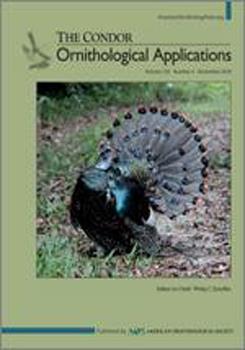The increasing intensity of wetland stressors in the Upper Midwestern United States hastens the need to understand how matrix composition influences wetland bird occurrence and abundance. The optimal spatial scale for assessing species–habitat relationships is not always apparent, but may affect inference about wetland use and suitability. We developed occupancy and abundance models, accounting for imperfect detection, for 9 wetland bird species breeding in Minnesota. We evaluated land cover associations at 3 spatial scales (12.6 ha, 50.3 ha, and 4,000 ha), quantified speciesspecific sensitivity to wetland availability and matrix habitat composition (agricultural and developed land covers), and assessed ecoregional variation in occupancy and abundance. Amount of wetland cover was positively associated with occupancy of 89% of species and with abundance of 67% of species, but the spatial scale of support differed among species. American Bittern (Botaurus lentiginosus), Pied-billed Grebe (Podilymbus podiceps), and Wilson's Snipe (Gallinago delicata) in particular were negatively impacted by anthropogenic land uses within the surrounding matrix, indicating a need to shift wetland conservation planning from the site scale to the landscape scale to capture pertinent drivers of wetland bird habitat use. Mean expected occupancy across all species was greatest in the Prairie Pothole Region (PPR), suggesting that restoration efforts within this ecoregion are likely to maintain wetland bird diversity. However, given the minimal total wetland availability and predominantly agricultural matrix in the PPR, protecting wetlands and upland buffers in the Aspen Parklands or Boreal ecoregions may represent a better investment for agricultural-sensitive species such as American Bittern, Sandhill Crane (Antigone canadensis), and Wilson's Snipe. Our modeling approach provides a multi-species framework for identifying habitat management priorities; future applications at broader spatial extents can continue to improve wetland bird conservation in a region with high rates of wetland loss and degradation.
How to translate text using browser tools
19 June 2019
Multiscale effects of wetland availability and matrix composition on wetland breeding birds in Minnesota, USA
Sarah P. Saunders,
Kristin A.L. Hall,
Nina Hill,
Nicole L. Michel
ACCESS THE FULL ARTICLE

The Condor
Vol. 121 • No. 3
August 2019
Vol. 121 • No. 3
August 2019
agriculture
development
ecoregion
land use
marshbird
Minnesota





